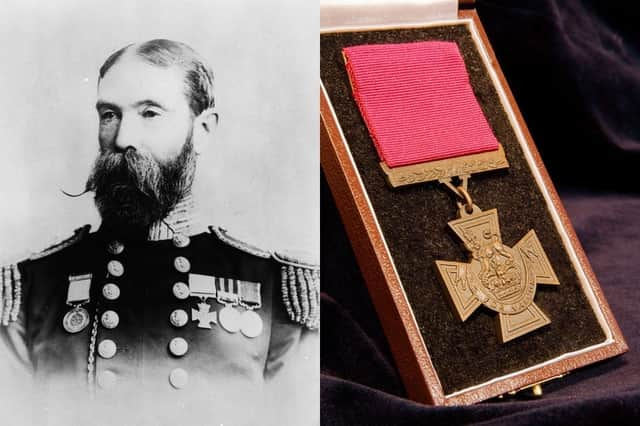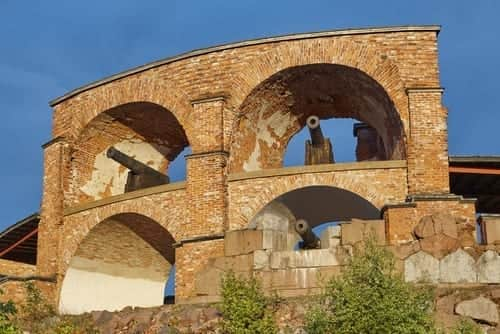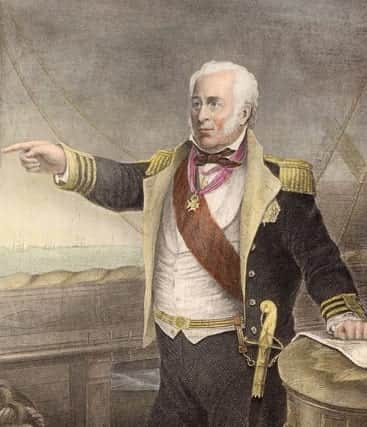The Northern Irishman who was awarded the first Victoria Cross


On June 26 1857, Queen Victoria awarded the first 62 Victoria Cross medals in front of audience of 100,000 at Hyde Park.
One of the men to be awarded was Charles Davis Lucas of County Monaghan.
Advertisement
Hide AdAdvertisement
Hide AdAlmost exactly three years before the award ceremony, the Ulsterman performed the heroic deed that earned him the medal in the violent Baltic theatre, during the Crimean War.


The first act of valour
In 1848, at the age of 13, Lucas enlisted with the Royal Navy.
Four years later, he saw his first action aboard the frigate Fox in the Second Anglo-Burmese War.
By the age of 20, Lucas had proved himself a competent and reliable sailor and was promoted to mate.
Advertisement
Hide AdAdvertisement
Hide Ad

Fellow seamen would realise just how reliable and cool-headed the Pontzypass-born Lucas was during one battle off the Åland Islands - between modern day Finland and Sweden.
In the midst of the Crimean War, the youthful Lucas took part in an attack on Bomarsund on the Russian controlled islands. Russian defences retaliated with their own shellfire on the HMS Hecla on which Lucas was a crew member.
The Russian seafort of Bomarsund (Photo: Shutterstock)
During the fierce battle, one live Russian shell landed on the upper deck on the HMS Hecla. As the fuse burned and threatened the lives of several men, Lucas, rather than diving for cover, picked up the device carried it to the ship's limits and threw it overboard into the chilly Baltic waters beneath.


Before making contact with water, the shell exploded. Because of the Northern Irishman's decisive action, no one on board was killed or seriously injured.
Advertisement
Hide AdAdvertisement
Hide AdPraise from superiors
The ship's veteran leader Captain William Hutcheson Hall promptly promoted Lucas to Lieutenant following his heroic actions.
Writing to Admiral Sir Charles Napier, Hall remarked on the incident: "With regard to Mr. Lucas, I have the pleasure to report a remarkable instance of coolness and presence of mind in action, he having taken up, and thrown overboard, a live shell thrown on board the ‘Hecla’ by the enemy, while the fuze [sic] was burning."


Sir Charles forwarded the letter onto the secretary of the Admiralty, adding: "their Lordships will observe, in Captain Hall’s letter, the great courage of Mr. C. D. Lucas, in taking up a live shell and throwing it overboard; and I trust their Lordships will mark their sense of it by promoting him.”
Admiral Charles Napier praised Charles Davis Lucas' actions (Photo: Shutterstock)
Advertisement
Hide AdAdvertisement
Hide AdOn January 29 1856, the Victoria Cross was established with the intention of recognising "most conspicuous bravery, or some daring or pre-eminent act of valour or self-sacrifice, or extreme devotion to duty in the presence of the enemy."
The earliest example of bravery to be recognised was the cool-headed action of Charles Davis Lucas aboard HMS Hecla.
Medal lost to history
Following his promotion to Lieutenant and the awarding of the Victoria Cross, Lucas continued ascend the ranks of the Royal British Navy. He ended his career as a rear-admiral in 1873 following 25 years of loyal service.
After his retirement from the Royal Navy, Lucas married Frances Russell Hall, the daughter of William Hutcheson Hall, whom had captained HMS Hecla during the Northern Irishman's finest hour.
Advertisement
Hide AdAdvertisement
Hide AdThe pair had three daughters and spent their final years in Kent.
While Lucas' actions have been immortalised, the Armagh born sailor's medal has been lost to history.
While working as a Justice for Peace in Argyllshire, Scotland, Lucas left his Victoria Cross on a train.
The medal would never be recovered and Lucas' medal would be replaced by a blank replica. The latter medal is on display at National Maritime Museum in Greenwich, London.